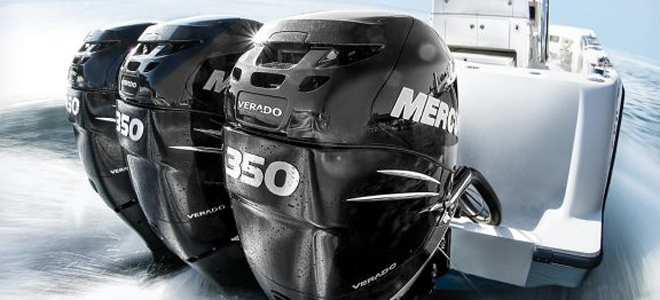
Skyhook eliminates need to grab the bottom
Anchoring technology has come a long way since the early days of boating. Power-Poles and Minn Kota Talons are remote-controlled anchoring systems that are great for inshore anglers, and Minn Kota’s iPilot and Motorguide’s xi5 trolling motors lock on to a satellite through GPS and keep a boat’s position steady, leaving anglers free to fish without having to worry about the boat slipping off the fishing hole.
While these systems have made life easier for shallow-water anglers, offshore anglers wanting to fish one spot are, for the most part, still forced to anchor the old-fashioned way. Satellite-locking trolling motors can be used offshore, but in many cases, it’s just not practical to have a trolling motor on an offshore boat.
Luckily, anglers fishing the deep blue can now hold steady in one position without having to toss out an old-style anchor. Mercury Marine has developed the Mercury Skyhook digital anchor, which uses GPS to lock on to satellites in much the same way as the trolling motors. The difference — and it’s a big one — is that the Skyhook digital anchor works on outboard motors instead of trolling motors.
The Skyhook works with multiple outboard-equipped boats; if you’ve only got one outboard, the system won’t work on your boat. But for those with two, three, or even four outboards, the Skyhook is a tool that will change not only the way you fish, but the way you boat in general.
Aside from keeping your boat anchored over your fishing spot, the Skyhook comes in handy in other applications. Waiting on a drawbridge or swing bridge to open, or waiting in line to get fuel or for an opening at the boat ramp can be a constant fight of turning the steering wheel left, then right, then hitting the throttle, shifting into reverse, etc. Those struggles are nonexistent with the Skyhook, even in strong winds or current. Your outboards shift and steer all on their own. And anytime multiple boats are nearby, or bridge pilings or other obstacles are present, the Skyhook is not just a matter of convenience but one of safety.
And unlike the GPS-locking trolling motors, when it’s time to go, all you have to do is shift your outboards into gear. You don’t have to worry about pulling the trolling motor up and securing it to the deck.
To anglers like Jimmy Callen of Pawleys Island, the Skyhook has meant the difference in him giving up offshore fishing and fishing even more than he did before.
“I’m retired, and it’s not always easy, especially during the offseason, to find someone to go offshore with me. Fishing offshore alone is challenging enough, and when you’re having to put the boat on the fishing hole, then toss out and set the anchor all on your own, it’s just not an easy thing to do,” he said.
“I was honestly on the verge of selling my boat because I didn’t use it enough, when I heard about the Skyhook system. Once I got that installed, I found out real quick just how revolutionary it is. I have fished more in the past year than I probably have in any year. It’s just that much easier.”
While it’s always a good idea to carry an anchor in case of emergency, not having to use one on a regular basis is easily one of the biggest, if not the very biggest, changes in offshore fishing. With a conventional anchor, once an angler finds structure to fish, he has to factor in the wind and current, make sure the anchor finds a secure hold, then hope that the anchor doesn’t come loose while fishing.
Even if everything works perfectly on the anchor drop, once the tide shifts, the boat shifts with it, meaning staying in that same spot will require pulling in the anchor, finding the structure on the depthfinder, and dropping anchor again. All of that work is eliminated when using Skyhook, which only requires the push of a button once over the fishing structure.
Not having to drop a conventional anchor saves more than the physical hassle involved. It’s not uncommon for anchors to get stuck in reefs and other bottom structure. Sometimes the anchor ropes are cut, leaving the anchor behind. Other times, the anchor is pulled up, breaking off chunks of reef materials.
Either way, not having to mess with an anchor offshore is a great deal for any fisherman.




Be the first to comment